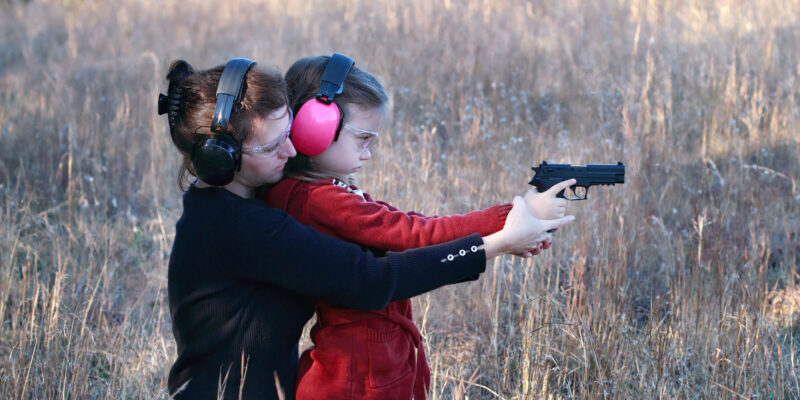Firearms & Children – Preventing Access & Firearms Safety Education
Simple precautions can prevent unauthorized access to our firearms, potentially saving a life or keeping a firearm from getting stolen.

Pretending firearms don’t exist is not a viable method of keeping children safe from firearms. They must be taught to respect firearms for the dangerous tools they are, just like we teach children to not touch the stovetop or to stay away from dad’s powertools.
While accidental firearm deaths are at an all-time low, every avoidable death is tragic, especially when it is a child. As responsible gun owners, it is critical that we always abide by the rules of firearm safety and keep our firearms away from unauthorized access.
Teach young children to not touch firearms
The first step in firearms safety around children should be to teach them simply to not touch firearms. The NRA’s Eddie Eagle Program is great for this.
- Stop
- Don’t touch
- Run away
- Tell a grown up
If you are so inclined, consider contacting your representatives and urge them to teach firearms safety in our schools. Unfortunately, Democrats keep on blocking the NRA’s efforts to teach children about firearm safety.
The children’s book, Toys, Tools, Guns & Rules: A Children’s Book About Gun Safety by USPSA shooter Julie Golob, also is an excellent tool for teaching young children to avoid firearms.
Teach older children safe firearms handling
As children get older, it’s important to teach children how to safely shoot firearms. This includes starting with the rules of firearms safety and working up. Airsoft and pellet guns are a great starting point, with single shot and bolt action .22lr rifles being a great step up from there.
Engraining safe firearm handling at a young age is a great way to prevent accidents in the future. Firearms safety is also a great tool for teaching kids responsibility, discipline, and about repercussions of their actions.
Lock up guns while not in use
Even if kids are taught how to handle firearms safely, it’s important to keep guns locked up when not in use. Sometimes kids can do things they know they aren’t supposed to do. But even if your kids know and respect firearms, their friends who visit might not share that respect.
Preventing the temptation is better than risking unauthorized access. As the saying goes, “locks keep honest people honest.”
Consider conceal carrying a gun in the home
The downside to locking up firearms is quite obvious – they are slower to get to should a self-defense situation arises. While most burglaries happen while no one is home, some home invasions are initiated by armed individuals who do not care if someone is home or not. Taking the time to run and get a firearm might not be an option. So consider simply keeping a handgun on you while at home.
Use a small nightstand safe for when not carrying the gun
If you choose to not conceal carry at home, or do and want to secure the handgun during the night, look into getting a bedside safe, though a trigger lock is a decent alternative. These items keep firearms safe, but still loaded in a ready condition.
Maintain respect for firearms
It is extremely easy to become complacent around firearms. This can manifest in getting lax with the rules of firearm safety or expecting everyone else to have the same standards of safe firearms handling.
Written by Brian Purkiss - always a student, sometimes a teacher.
I don't consider myself a competition shooter - I think of myself as a performance pistol shooter. I am all about performing at as high of a level as possible. Towards that end, I am obsessive about learning how to perform. I spend a lot of my life learning from the best across the entire firearms world and even into other areas of performance and other sports. I am a USPSA Carry Optics Grandmaster, currently working towards my second GM title in the Open division.
Want more? Follow on Instagram, Facebook, or Email.